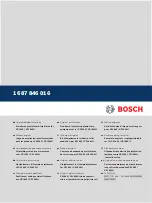
P-2024 Support Notes
All contents copyright (c) 2006 ZyXEL Communications Corporation.
32
Depending on your computer, data process speed varies and few computers can achieve data processing rates at
up to 30 Mbps.
Ethernet (10baseT) is the most popular cable modem interface standard for a computer. This automatically
limits the speed of the connection to less than 10 Mbps even if the modem can receive at 30 Mbps. Most Local
Area Networks use 10baseT Ethernet, and although they are 10 Mbps networks, it takes a much longer than one
second to transmit 10 megabits (or 1.25 megabytes) of data from one terminal to another.
Cable modems on the same node share the same bandwidth, which means that congestion is created when too
many people try to access the Internet at the same time. In addition, when one user is downloading large graphic
or video files, a significant portion of the shared bandwidth is used thus slowing down access for other users in
the same neighborhood.
Most independent Internet Service Providers today connect to the Internet using a single 1.5 Mbps "T1"
telephone line. All their subscribers share that 1.5 Mbps bandwidth. Cable companies connecting to the Internet
backbone using a T1 limit their subscribers to an absolute maximum of 1.5 Mbps.
To create the appearance of faster network access, ISPs store or "cache" frequently requested web sites and
Usenet newsgroups on a server in the central office (CO). Storing data locally will remove some of the
bottleneck at the backbone connection.
How fast can they go? Theoretically, they can receive data at speeds up to 30 Mbps. In the real world, with cost
conscious cable companies running the systems, the speed will probably fall to about 1.5 Mbps.
My P-2024 cannot obtain a WAN IP address from the ISP to connect to the Internet, what
should I do?
There are various ways your ISP controls user access and login. Once a user has successfully logged into, the
ISP will provide the WAN IP address to the user.
The following lists the methods ISP's authenticates users.
1.
Check if the modem's MAC address' is valid.
2.
Check if the host name is correct. The host name is usually the text after the @ sign. For example,
@home
3.
Check if the user ID is valid. This is commonly used with the RR-Toshiba Authentication and
RR-Manager Authentication services.
















































